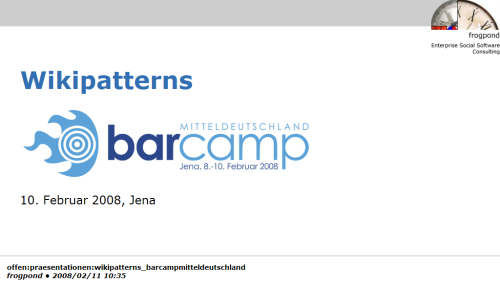There’s an interesting debate going on, which is definitely worthwhile to follow. Arguments are exchanged whether, and if so how enterprise software can be as “sexy” as the all new web. Robert Scoble triggered it off (but somebody else called for it in the first place), got criticized and even flamed badly, others came to help, and so on. You know the game, see Techmeme for more. I am sure you will be enjoying the discussion in all branches and forks as much as I am.
While discussing UI, usability, user-friendliness and all is interesting (though putting lipstick on a pig really doesn’t help much) – well, even the endless arguments of “industrial-strength-software proponents” are entertaining in a way because we know better (this is dire stuff, and I ask myself if those guys ever worked with enterprise-style-software like R/3) – I want to chip in some observations from another perspective.
As a long-time enterprise software user, developer (yes, I was – years ago in my old life) and today enterprise 2.0 & enterprise social software consultant, I want to offer look at this from a position of wiki advocate (-evangelist, if you want).
Are enterprise wikis sexy? Most people don’t think so – but I think they get it wrong: Enterprise wikis are interesting not because of their advanced technology, their polished user interface or their neat mark-up language – in fact these are kind of disadvantages most of the time when we want corporate adoption to take off. Like when people doubt whether the wiki markup language will be accepted in their companies – they sure don’t deem wiki markup sexy. Yes, these are no shiny tools, they don’t offer eye candy, but they are well suited for doing their job.
The key is to start from business applications and needs – not tools. If the starting point is a specific business application like e.g. project management or business development support, users will judge the sexyness of the application in a different way – they will look for personal use and business value primarily.
Wikis soon gain “cool tools status” – just because they offer room for flexible emergent uses, coupled with great simplicity. In this light Dave Snowden opens a can of worms, which should attract more discussing, when he’s pointing to the inherent differences between complex social software and standard enterprise ware.
So yes, wikis can even be fun to use, and while sexyness is always a matter of taste, this is a good start and adds to the other wiki benefits like scalabity, connectivity and cost effectiveness that stand on their own anyway. This is no “fantasy land”, this is today, the 21st century and the changes will be great, and they won’t be about technology or tools:
Enterprise 2.0 is already upon us, providing us attractive, usable, reliable and secure applications. We just haven’t made the move to adopting it. But it’s happening now, with Generation M, mobile, multimedia, multitasking and here. Now.
